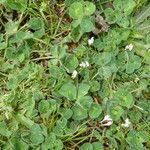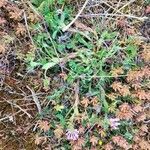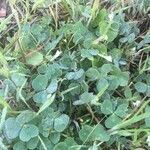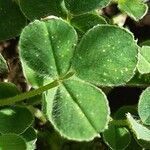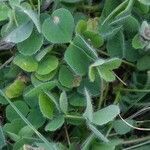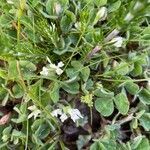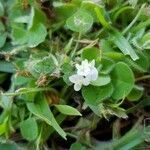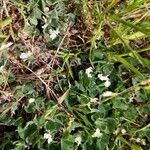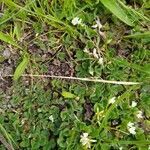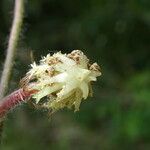Annual herb, 0.1-0.3 m high, stems decumbent, sparingly branched, slightly furrowed. Leaves long-petioled. Leaflets 8-12 mm long, obcordate, base cuneate, apex denticulate, notched. Stipules ovate, acute. Inflorescences: heads ± 10 mm in diam., obovoid, loose, long-peduncled. Flowers white, pinkish striped, ± 10 mm long. Calyx: those of sterile flowers with solid tube and linear teeth. Petals: standard elliptical. Flowering time Mar., Apr. (native countries). Fruiting heads with few seed-bearing calyces and many wire-like sterile ones deflexed to cover fertile ones and pushing them into ground, ripening underground. Pod somewhat exserted from split calyx, membranous, ± obovoid, 1-seeded.
A small herb. It grows along the ground. It is often hairy. The leaves have 3 leaflets. The leaflet colour and shape can vary. They can have dark or white marks like a crescent or spots. The leaflets tend to be round and broader at the end with a notch. The lower surface is more hairy. The flowers occur in groups or 3 or 4. They are creamy-white. These are in the axils of stems. The flowers droop downwards when mature. The flowers develop a burr which is forced towards the soil. It gets buried in the soil.
